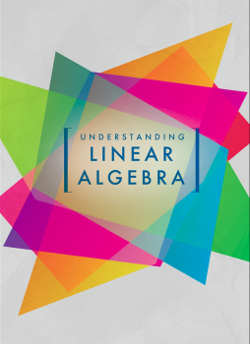Skip to main content
Contents Index Dark Mode Prev Up Next \(\newcommand{\avec}{{\mathbf a}}
\newcommand{\bvec}{{\mathbf b}}
\newcommand{\cvec}{{\mathbf c}}
\newcommand{\dvec}{{\mathbf d}}
\newcommand{\dtil}{\widetilde{\mathbf d}}
\newcommand{\evec}{{\mathbf e}}
\newcommand{\fvec}{{\mathbf f}}
\newcommand{\nvec}{{\mathbf n}}
\newcommand{\pvec}{{\mathbf p}}
\newcommand{\qvec}{{\mathbf q}}
\newcommand{\svec}{{\mathbf s}}
\newcommand{\tvec}{{\mathbf t}}
\newcommand{\uvec}{{\mathbf u}}
\newcommand{\vvec}{{\mathbf v}}
\newcommand{\wvec}{{\mathbf w}}
\newcommand{\xvec}{{\mathbf x}}
\newcommand{\yvec}{{\mathbf y}}
\newcommand{\zvec}{{\mathbf z}}
\newcommand{\rvec}{{\mathbf r}}
\newcommand{\mvec}{{\mathbf m}}
\newcommand{\zerovec}{{\mathbf 0}}
\newcommand{\onevec}{{\mathbf 1}}
\newcommand{\real}{{\mathbb R}}
\newcommand{\twovec}[2]{\left[\begin{array}{r}#1 \\ #2
\end{array}\right]}
\newcommand{\ctwovec}[2]{\left[\begin{array}{c}#1 \\ #2
\end{array}\right]}
\newcommand{\threevec}[3]{\left[\begin{array}{r}#1 \\ #2 \\ #3
\end{array}\right]}
\newcommand{\cthreevec}[3]{\left[\begin{array}{c}#1 \\ #2 \\ #3
\end{array}\right]}
\newcommand{\fourvec}[4]{\left[\begin{array}{r}#1 \\ #2 \\ #3 \\ #4
\end{array}\right]}
\newcommand{\cfourvec}[4]{\left[\begin{array}{c}#1 \\ #2 \\ #3 \\ #4
\end{array}\right]}
\newcommand{\fivevec}[5]{\left[\begin{array}{r}#1 \\ #2 \\ #3 \\
#4 \\ #5 \\ \end{array}\right]}
\newcommand{\cfivevec}[5]{\left[\begin{array}{c}#1 \\ #2 \\ #3 \\
#4 \\ #5 \\ \end{array}\right]}
\newcommand{\mattwo}[4]{\left[\begin{array}{rr}#1 \amp #2 \\ #3 \amp #4 \\ \end{array}\right]}
\newcommand{\laspan}[1]{\text{Span}\left\{#1\right\}}
\newcommand{\bcal}{{\cal B}}
\newcommand{\ccal}{{\cal C}}
\newcommand{\scal}{{\cal S}}
\newcommand{\wcal}{{\cal W}}
\newcommand{\ecal}{{\cal E}}
\newcommand{\coords}[2]{\left\{#1\right\}_{#2}}
\newcommand{\gray}[1]{\color{gray}{#1}}
\newcommand{\lgray}[1]{\color{lightgray}{#1}}
\newcommand{\rank}{\operatorname{rank}}
\newcommand{\row}{\text{Row}}
\newcommand{\col}{\text{Col}}
\renewcommand{\row}{\text{Row}}
\newcommand{\nul}{\text{Nul}}
\newcommand{\var}{\text{Var}}
\newcommand{\corr}{\text{corr}}
\newcommand{\len}[1]{\left|#1\right|}
\newcommand{\bbar}{\overline{\bvec}}
\newcommand{\bhat}{\widehat{\bvec}}
\newcommand{\bperp}{\bvec^\perp}
\newcommand{\xhat}{\widehat{\xvec}}
\newcommand{\vhat}{\widehat{\vvec}}
\newcommand{\uhat}{\widehat{\uvec}}
\newcommand{\what}{\widehat{\wvec}}
\newcommand{\Sighat}{\widehat{\Sigma}}
\newcommand{\basis}[2]{#1_1,#1_2,\ldots,#1_{#2}}
\newcommand{\lt}{<}
\newcommand{\gt}{>}
\newcommand{\amp}{&}
\definecolor{fillinmathshade}{gray}{0.9}
\newcommand{\fillinmath}[1]{\mathchoice{\colorbox{fillinmathshade}{$\displaystyle \phantom{\,#1\,}$}}{\colorbox{fillinmathshade}{$\textstyle \phantom{\,#1\,}$}}{\colorbox{fillinmathshade}{$\scriptstyle \phantom{\,#1\,}$}}{\colorbox{fillinmathshade}{$\scriptscriptstyle\phantom{\,#1\,}$}}}
\)
Chapter 6 Orthogonality and Least Squares
We introduced vectors as a means to develop visual intuition about our basic questions concerning linear systems. For example, vectors allow us to reinterpret questions about the existence of solutions to linear systems as questions about the span of a set of vectors. Questions about the uniqueness of solutions led to the concept of linear independence.
In this chapter, we will begin to think of vectors as geometric objects that have lengths and that form angles. In some cases, this will simplify our search for solutions to a linear system. Perhaps more importantly, we will be able to measure the distance between vectors. This means that if a system
\(A\xvec=\bvec\) is inconsistent, we can look for
\(\xhat\text{,}\) the vector for which
\(A\xhat\) is as close to
\(\bvec\) as possible. This leads to the method of
least squares , which underpins regression, a key tool in data science.

